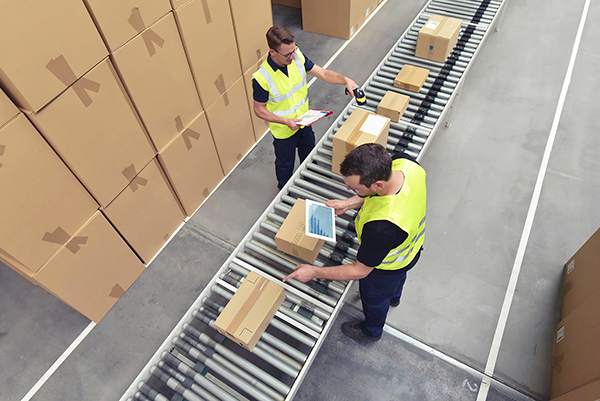It’s time to shift our thinking about warehouse automation and focus on its less visible applications, uncovering a hotbed of opportunity.
By Kevin Beasley, chief information officer, VAI
Warehouse automation software and systems are forecasted to become a $47.4 billion market by 2023. But questions persist about how humans will fit into our increasingly automated future.
For example, will some workers lose their jobs? If not, what will they do instead? And is a transition to automated, nonhuman warehouses possible or even desirable?
Mega-distribution centers like Amazon’s, complete with nicknamed robots, are some of the most visible images of warehouse automation. However, cost savings, operational efficiencies, and even training opportunities are possible when organizations opt to implement warehouse automation — potentially without losing a single worker.
The fear that automation may displace workers is rooted in a general misunderstanding of the technology. Automation does not necessarily render the human workforce obsolete. Instead, it can make existing warehouse jobs more efficient, fill labor gaps, and provide career advancement opportunities for employees who learn new skills.

Now that we have broken down the realities behind the impact of automation on the workforce, we can take a closer look at the efficiencies and improvements that come from adopting warehouse automation. Automation helps increase inventory accuracy, improve safety, and streamline operations — all of which can reduce operational costs in the long run.
Operation optimization
Automation can complement human activity in nearly every aspect of warehouse operations. For example, radio frequency identification (RFID) and barcode scanning are replacing manual data entry to keep a more accurate inventory count, allowing you to reallocate time and energy to other tasks. Automation can also be used for more efficient and accurate warehouse order picking, which plays a pivotal role in reducing operational costs.
But automation technology can do more than just perform repetitive and laborious tasks. It can also complete complex tasks like analyzing workflows and identifying the speeds at which products move through the supply chain. Coupling these technologies with an enterprise resource planning (ERP) system allows you to collect data and unlock valuable insights that lead to smarter decision-making and streamlined processes.
Safety improvements
In 2019, the U.S. Bureau of Labor Statistics reported a rate of 4.8 injuries and illnesses for every 100 warehouse workers, with forklifts, falls, working with hazardous materials, and repetitive motion as the most common sources of injuries. Warehouses are growing in size — both in width and height. Robotics can aid in areas such as restocking and moving the products on shelves too tall for you to access safely. Additionally, the temperatures in warehouses, whether freezing or scorching, can create uncomfortable or unsafe work environments. Adopting automation reduces the need for you to work in such environments, along with potentially reducing the need for you to perform repetitive and laborious tasks that can cause injury.
It is critical to reframe our thinking around warehouse automation and look beyond the superficiality of robotic-powered warehouses portrayed in the media as simply a cost-saving measure. Automation benefits warehouses in much more significant ways that supplement the work of humans and result in substantial operational efficiencies and cost reductions.

As CIO at VAI, Kevin Beasley oversees both the corporation’s technology strategy in conjunction with product development and the internal information technology initiatives that support the goals of the company. He has decades of ERP, SCM, and WMS consulting experience and extensive experience in the IT space.
Beasley, who joined VAI in 1988, is a key presenter at VAI conferences and events, and also serves as a leading source for media and PR relations.
Contact Information
Diane Dady
VAI
631-619-4729
ddady@vai.net
www.vai.net
Bridget Devine
Walker Sands Communications
312-561-2492
bridget.devine@walkersands.com
In this episode, I sat down with Beejan Giga, Director | Partner and Caleb Emerson, Senior Results Manager at Carpedia International. We discussed the insights behind their recent Industry Today article, “Thinking Three Moves Ahead” and together we explored how manufacturers can plan more strategically, align with their suppliers, and build the operational discipline needed to support intentional, sustainable growth. It was a conversation packed with practical perspectives on navigating a fast-changing industry landscape.